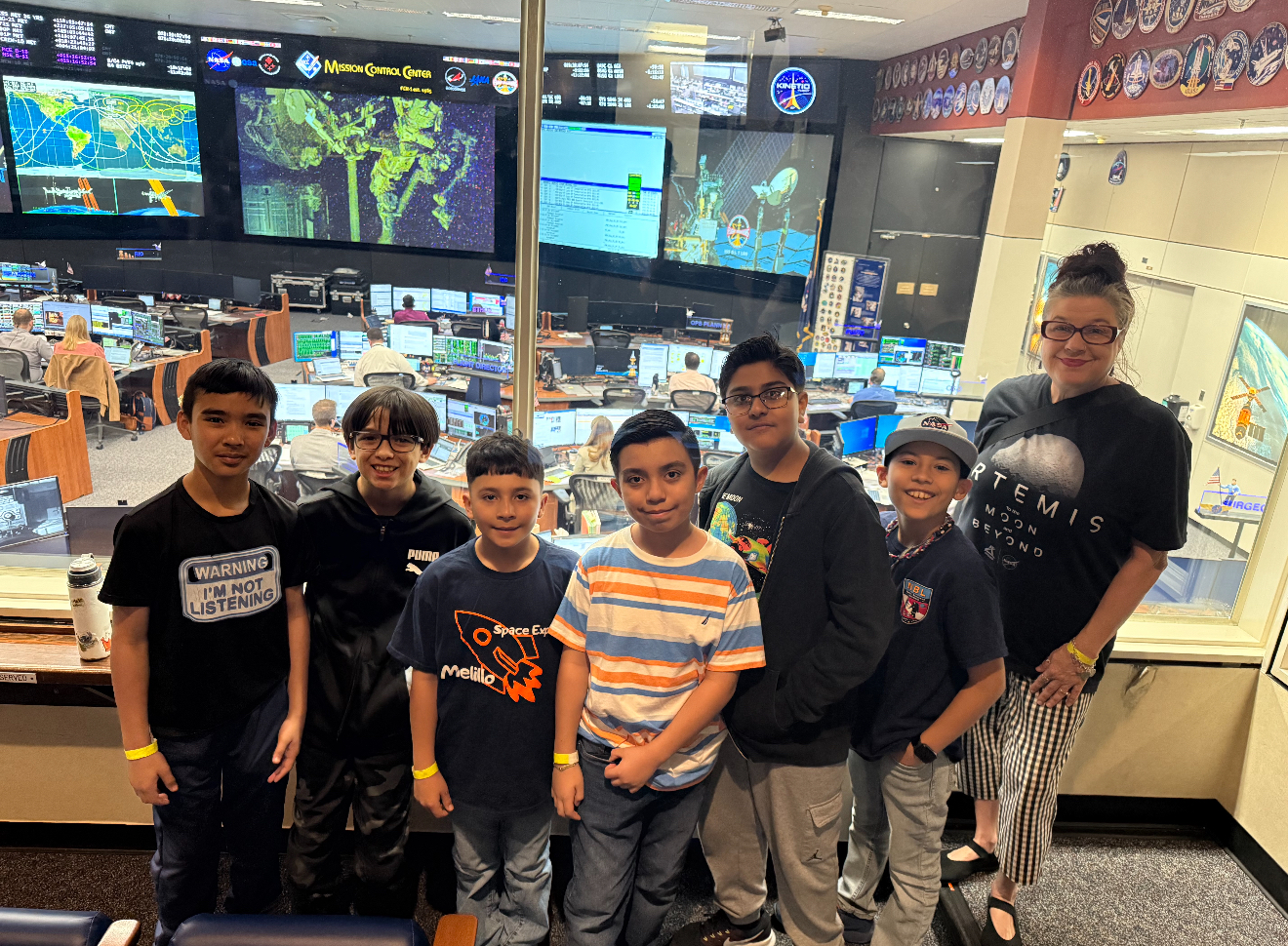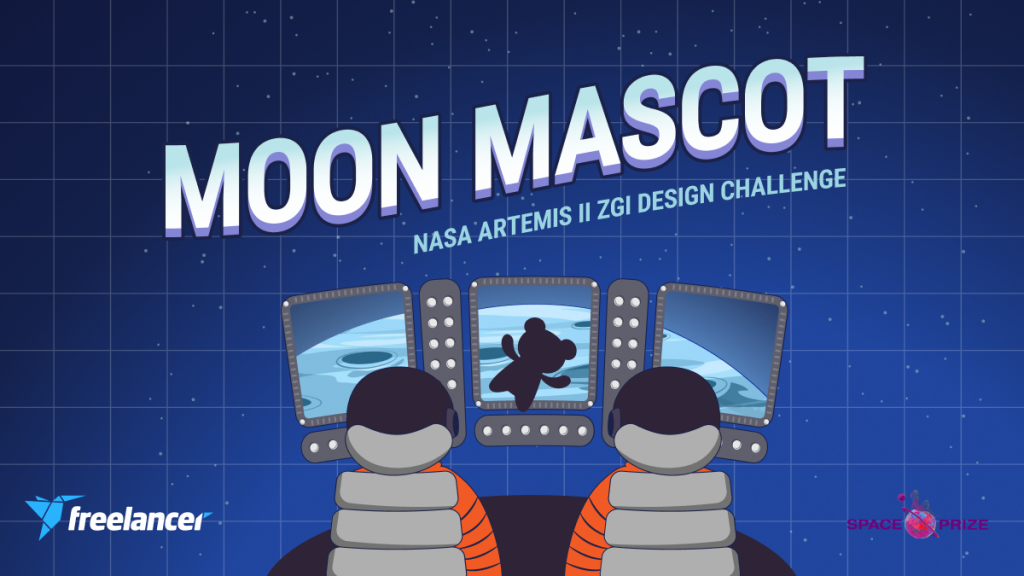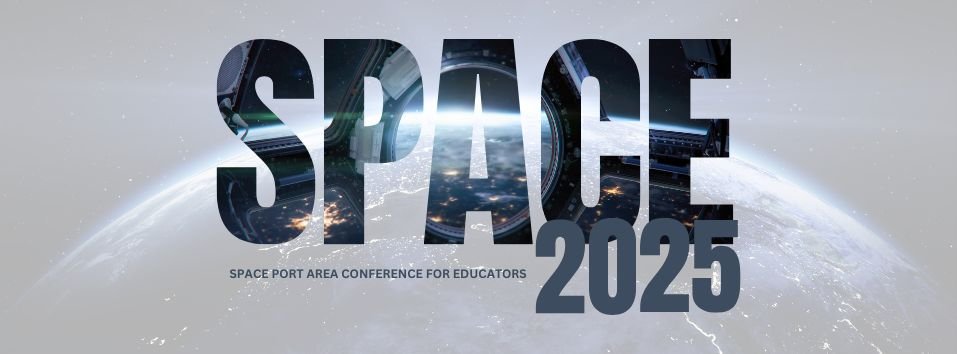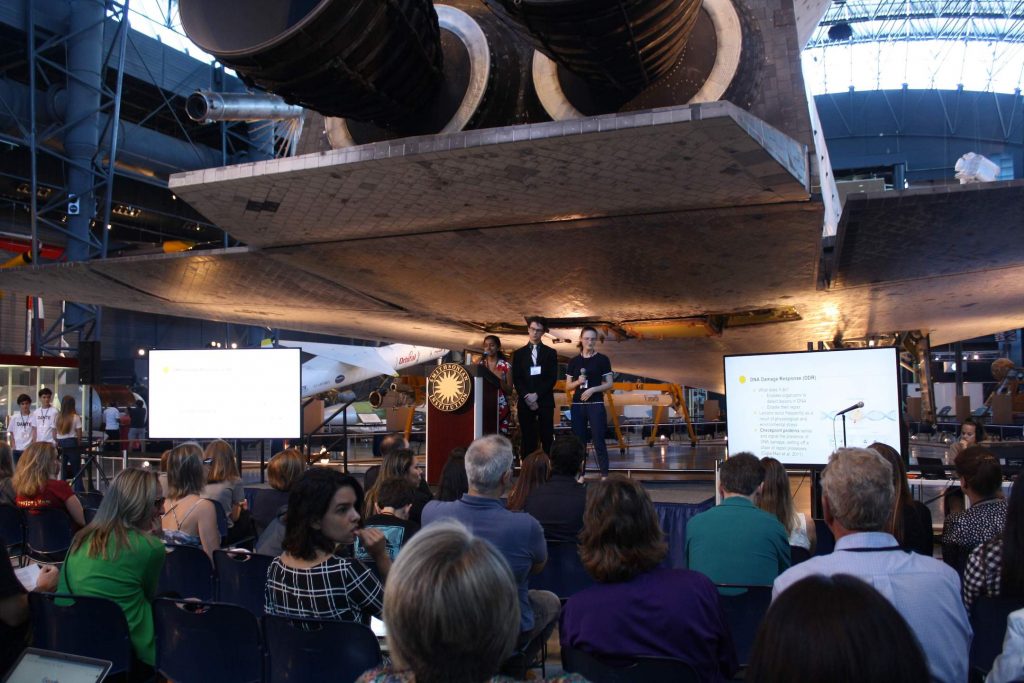
Texan Teams Place Big in Build The Moon Challenge

Texas Space Grant would like to congratulate teams Space Explorers and Galaxy Explorers from Melillo Middle School for their Best in Show designations during the Spring 2025 Build the Moon Challenge!
With NASA going back to the moon, we need infrastructure to support astronauts during their long-duration missions. In the Build the Moon Challenge, young researchers are tasked with creating their own concrete mixtures to build and develop future lunar habitats using lunar regolith simulant.
Led by their coach Nicole Ram, a previous TSGC program participant, the Space Explorers and Galaxy Explorers created a landing pad, a brick wall, and lunar habitat designs with their lunar simulant concrete mixtures. “They love being a part of the Artemis generation,” said Ram about her students’ experience, “what competition are we going to compete in next year?”
Texas Space Grant is proud to support programs like Build the Moon to help engage, educate, and inspire the next generation of students. One Melillo student remarked about opportunities like Build the Moon: “I would love to work for NASA one day and being exposed to NASA’s projects at a young age is allowing me to gain some type of experience for my future career.”
Build The Moon applications are set to open again in the Fall.
Design a ZGI to Travel to the Moon with Artemis II

NASA is on the search for a new Zero Gravity Indicator for the Artemis II mission! A ZGI is a small plush object that helps astronauts visualize when the Orion capsule enters the weightlessness of space. People of all ages are invited to apply.
Submissions are due Monday, June 16
SPACE Conference for Educators Invites Teachers to Kennedy Space Center

The annual Space Port Area Conference for Educators (SPACE) offers teachers an immersive experience with educator-led workshops, SME presentations, and hands-on activities that align with STEM curriculum objectives. Teachers will also be able to engage with experts in the field, get a peek at the behind-the-scenes operations of Kennedy Space Center, and gain access to cutting-edge resources.
The SPACE Conference will be held June 25-27. Registration is currently open.
NASA Advanced Air Vehicles Program Fellowship Opportunities

NASA’s Aeronautics Research Mission Directorate is seeking proposals from U.S. institutions for research training grants. This opportunity is aimed at Master or Doctoral students and research projects in disciplines needed to help advance NASA’s mission.
Applications for AAVP are due June 11.
Student Spaceflight Experiments Program Opens Applications for Microgravity Experiments

The National Center for Earth and Space Science Education is on the search for universities and colleges to design and propose microgravity experiments to fly in low-Earth orbit on the International Space Station. One experiment at each institution will be selected to fly to the ISS on a SpaceX Falcon 9 rocket launching from NASA’s Kennedy Space Center. Astronauts aboard the ISS will operate the experiment for 4-6 weeks before it is returned to Earth and to your community’s student flight team for harvesting and analysis.
Applications for SSEP close on June 30.
THIS MONTH IN SPACE

JUNE 2, 1966
SURVEYOR-1 LANDS
NASA’s Surveyor-1 completed the first true soft-landing on the Moon. Surveyor would go on to send over 11,000 images of the lunar surface back to NASA.
JUNE 3, 1965
FIRST U.S. SPACEWALK
NASA astronaut Edward White stepped out of his Gemini capsule for the first American spacewalk. He was attached by only a 23 foot tether and 25 foot umbilical during his 20 minute spacewalk.
JUNE 10, 1982
ISEE-3’S MAGNETIC DISCOVERY
The ISEE-3 spacecraft begins to use its thrusters to move into the tail of Earth’s magnetosphere. It would complete the first deep survey of Earth’s tail and detected a huge plasmoid of electrified gas that had been ejected.
JUNE 18, 1983
AMERICA’S FIRST WOMAN IN SPACE
NASA astronaut Sally Ride became the first American woman in space aboard the Challenger.
JUNE 22, 2000
POSSIBLE EVIDENCE OF LIQUID FOUND ON MARS
Scientists analyzed data from NASA’s Mars Global Surveyor spacecraft and found what appeared to be gullies formed by flowing water. They also found debris and mud deposits that these flows may have left behind.
